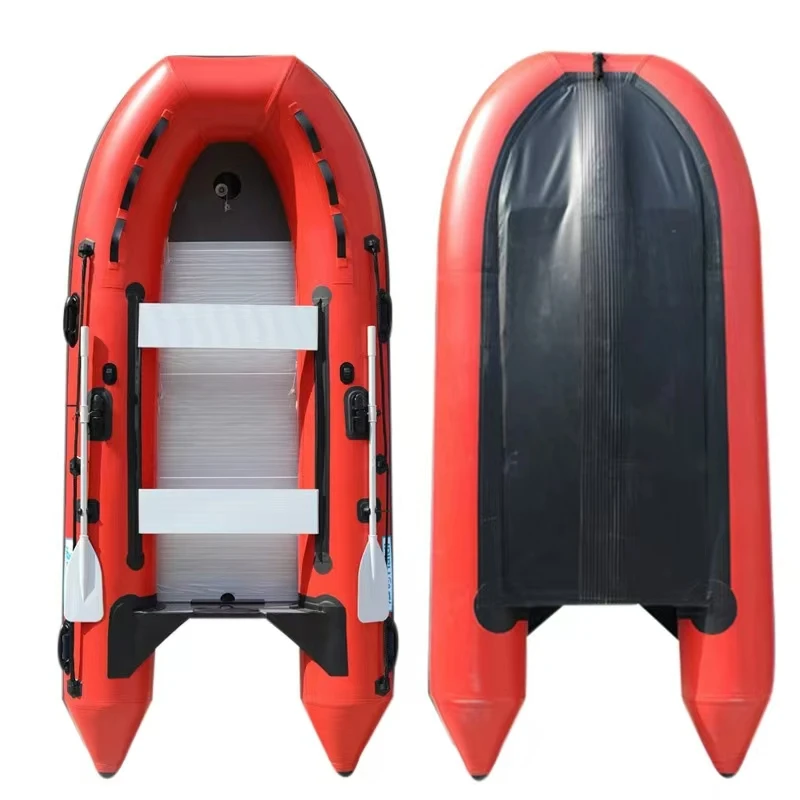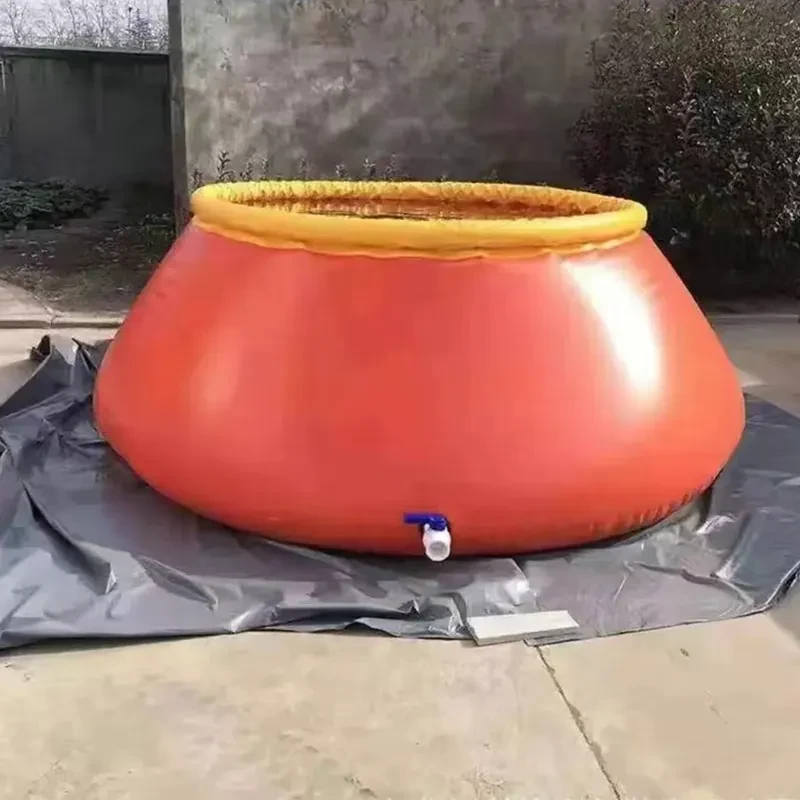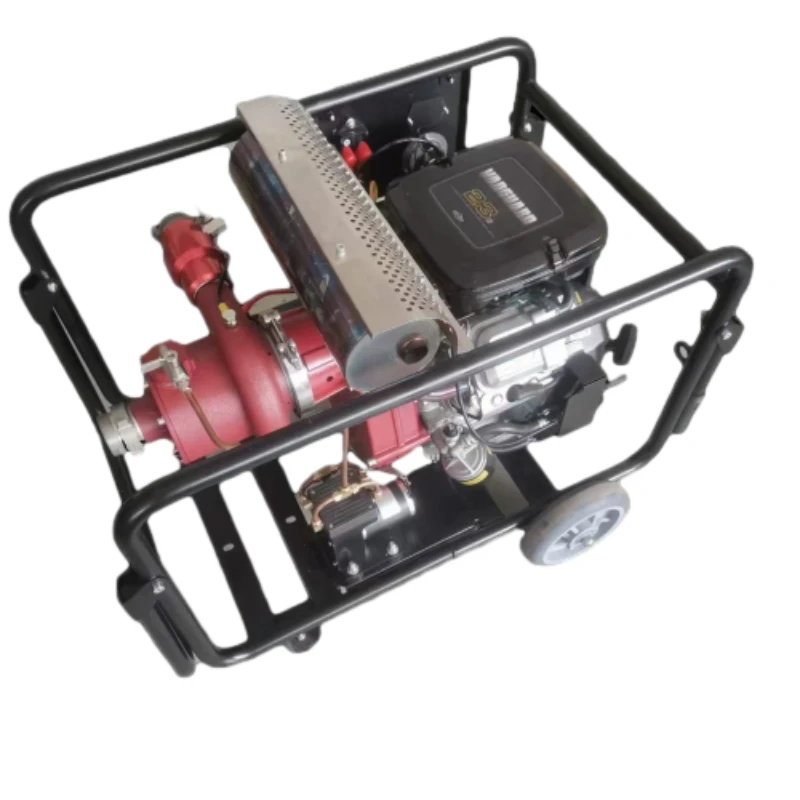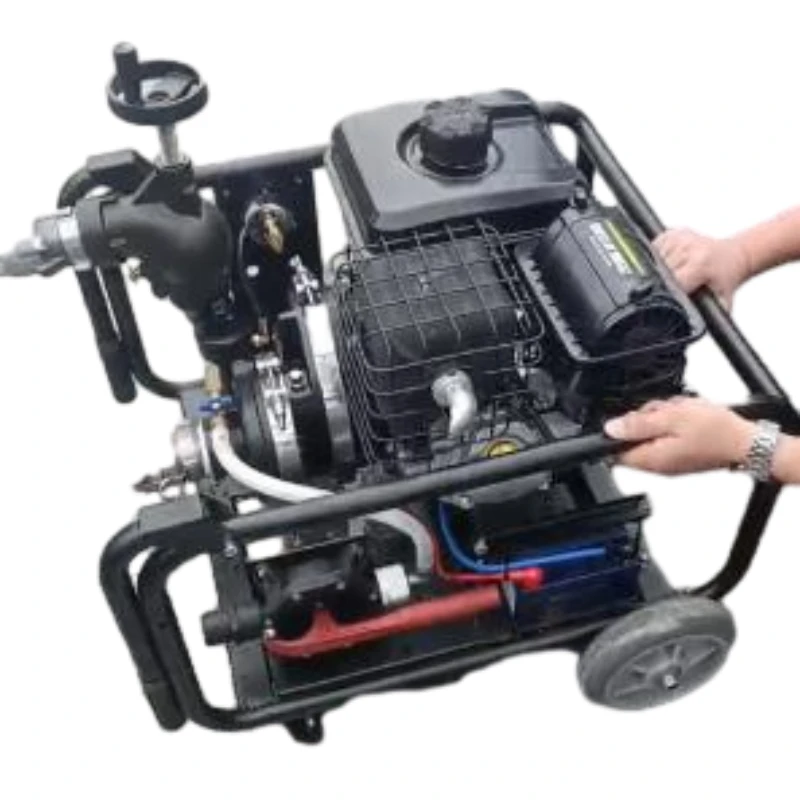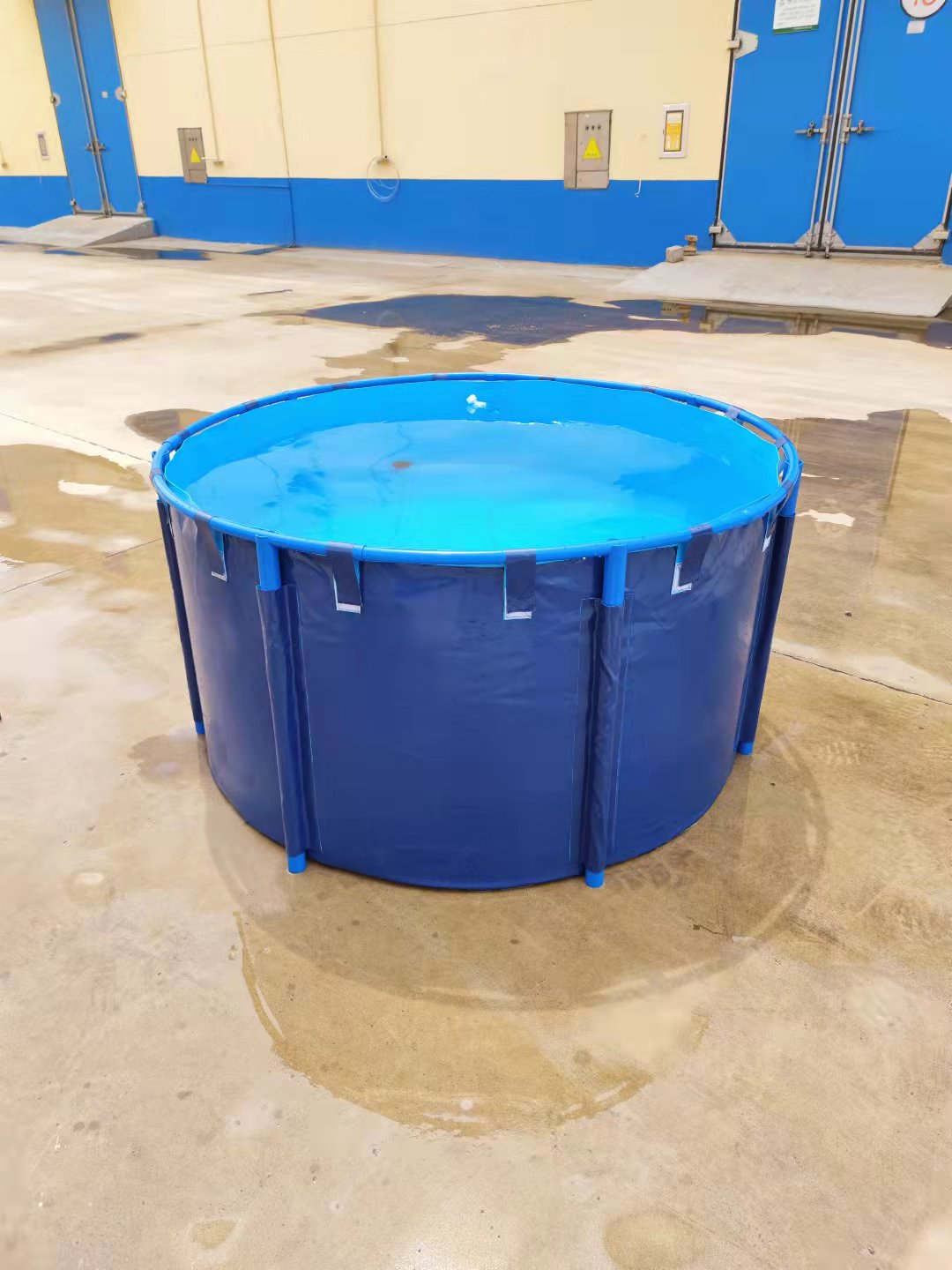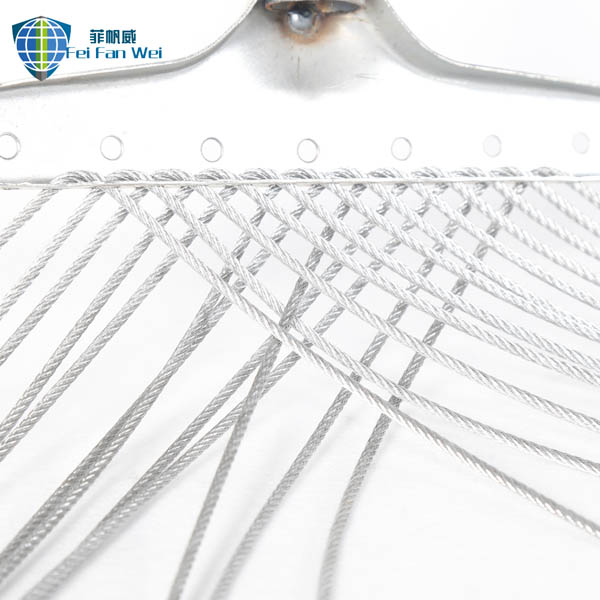Industry Trends and the Evolution of Portable Fire Suppression
The landscape of fire suppression technology is continuously evolving, driven by the increasing demands for rapid response, operational efficiency, and environmental considerations. In remote or challenging terrains, conventional fire apparatus often fall short, necessitating agile and powerful solutions. This growing need has propelled the development and adoption of advanced portable fire suppression systems. Among these, High pressure Lightweight backpack portable fire Pumps represent a critical innovation, offering an unparalleled blend of mobility, power, and effectiveness for first responders and industrial safety teams.
Current industry trends highlight a significant shift towards compact, ergonomic designs without compromising performance. Factors such as the increase in wildland-urban interface fires, the expansion of industrial operations into less accessible areas, and the emphasis on initial attack capabilities are driving market growth. Innovations in engine technology, material science (e.g., advanced aluminum alloys, composites), and pumping mechanisms are enabling these units to deliver higher pressures and flow rates while drastically reducing weight. Furthermore, smart integration features, such as improved fuel efficiency and reduced emissions, are becoming standard requirements, aligning with global environmental regulations and corporate sustainability goals. The demand for robust, reliable, and easily deployable solutions is not just a preference but a necessity for industries where timely intervention can prevent catastrophic losses.
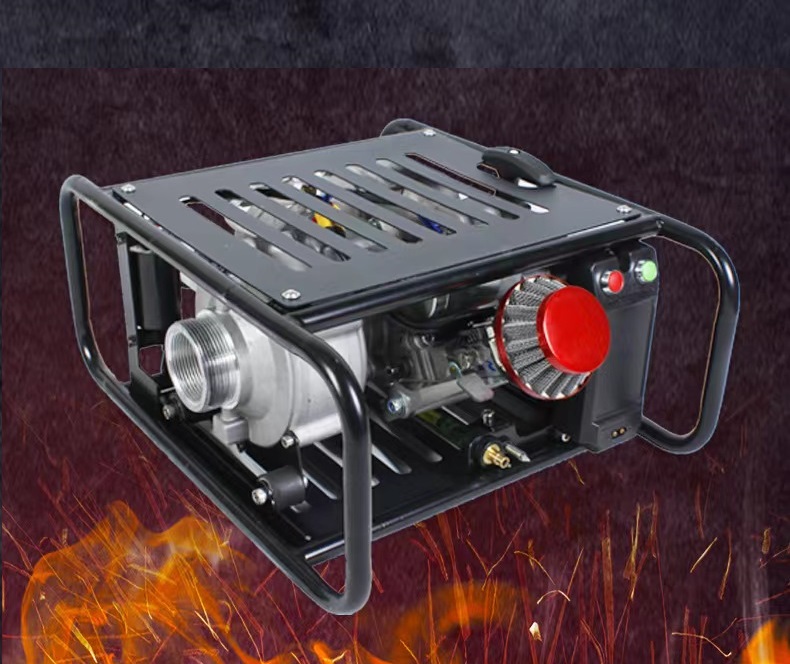
The Advanced Manufacturing Process of High-Pressure Lightweight Backpack Portable Fire Pumps
The production of High pressure Lightweight backpack portable fire Pumps involves a meticulous, multi-stage manufacturing process designed to ensure unparalleled performance, durability, and reliability under extreme conditions. Every component is engineered and fabricated to meet stringent quality and safety standards, adhering to global benchmarks like ISO 9001 for quality management and NFPA 1901 for fire apparatus.
1. Material Selection & Preparation
High-grade materials are paramount. For pump housings and impellers, corrosion-resistant aluminum alloys (e.g., A356-T6) or marine-grade bronze are typically selected for their superior strength-to-weight ratio and resistance to harsh environments. Engine components feature robust steels and engineered plastics. Backpack frames utilize lightweight, high-strength aluminum tubing or carbon fiber composites, while tanks are constructed from impact-resistant, UV-stabilized polyethylene.
2. Component Fabrication
- Casting: Pump volutes and impellers are often precision-cast. This process involves pouring molten aluminum alloy into molds, followed by controlled cooling to achieve specific metallurgical properties. Heat treatment (T6 temper for aluminum) significantly enhances mechanical properties like tensile strength and hardness.
- Forging: Critical, high-stress components within the engine and pump assembly may undergo forging. This process involves shaping metal under extreme pressure to improve grain structure, eliminating porosity and resulting in exceptional strength and fatigue resistance.
- CNC Machining: Precision is achieved through advanced Computer Numerical Control (CNC) machining. This highly automated process precisely shapes components like shafts, seals, and connection points to tight tolerances, ensuring optimal fit, minimal vibration, and maximum efficiency.
- Welding & Assembly: Frame components are carefully welded using TIG or MIG methods to ensure strong, clean joints. Fuel tanks and other plastic parts are often rotationally molded or blow molded for seamless, leak-proof construction.
- Surface Treatment: Components undergo various surface treatments, including anodizing for aluminum parts to enhance corrosion resistance and durability, and powder coating for frames for aesthetic appeal and protection against wear and tear.
3. Assembly & Integration
Skilled technicians meticulously assemble the engine, pump, frame, and auxiliary systems. This stage includes installing fuel lines, electrical wiring, ergonomic backpack harnesses, and control panels. Each connection is inspected for integrity.
4. Rigorous Testing & Quality Assurance
- Hydrostatic Testing: Pump housings and water pathways are subjected to high-pressure hydrostatic tests to detect any leaks or structural weaknesses, far exceeding operational pressures.
- Performance Testing: Each unit undergoes comprehensive performance testing, measuring critical parameters such as maximum flow rate, maximum pressure, fuel consumption, and engine RPM. These tests ensure the pump meets or exceeds specified outputs.
- Endurance & Durability Testing: Prototypes and batch samples are subjected to extended run-time tests, simulated harsh environmental conditions (e.g., extreme temperatures, vibration), and drop tests to validate long-term durability and resistance to operational stresses.
- Compliance: Products are tested against international standards such as ISO (e.g., ISO 9001 for quality, ISO 2284 for connections), ANSI (e.g., B73.1 for centrifugal pumps), and specific fire safety standards like NFPA 1901 (Standard for Automotive Fire Apparatus) and relevant CE directives for European markets.
Service Life & Target Industries:
Designed for a service life exceeding 10-15 years with proper maintenance, these pumps serve critical functions across diverse sectors:
- Petrochemical: Initial suppression, cooling of equipment, hazardous material spill control.
- Mining: Dewatering, dust suppression, underground fire fighting.
- Forestry & Wildland Firefighting: Direct attack, mop-up operations, controlled burns.
- Agriculture: Irrigation, pest control, equipment washing, fire break creation.
- Construction: Dewatering excavations, equipment cleaning, site fire protection.
- Emergency Services & SAR: Remote area fire suppression, flood relief, general utility pumping.
- Water Supply & Drainage: Auxiliary pumping, emergency water transfer.
The rigorous manufacturing and testing protocols ensure that these pumps deliver significant advantages, including superior energy efficiency due to optimized hydraulic designs, and exceptional corrosion resistance from premium materials and surface treatments, providing a lower total cost of ownership and reliable operation in the most demanding environments.
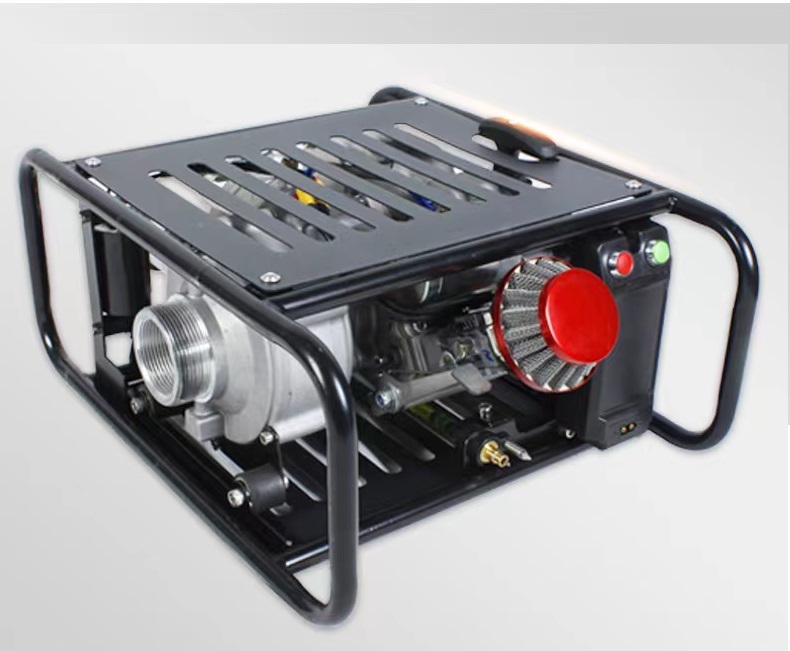
Technical Specifications and Performance Parameters
Understanding the detailed technical specifications is crucial for selecting the appropriate High pressure Lightweight backpack portable fire Pumps for specific operational needs. These pumps are engineered to deliver high performance in compact, man-portable packages.
Typical Product Specifications Table
| Parameter | Value Range | Unit |
|---|---|---|
| Max. Flow Rate | 20-40 (at 1-2 bar) | Liters/minute (LPM) |
| Max. Pressure | 15-25 | Bar (or 217-362 PSI) |
| Engine Type | 2-stroke or 4-stroke gasoline | N/A |
| Engine Displacement | 50-100 | cm³ (cc) |
| Engine Power | 2.5-5.0 | HP (Horsepower) |
| Dry Weight | 8-15 | kg |
| Fuel Tank Capacity | 1.0-2.5 | Liters |
| Water Tank Capacity (Integrated) | 20-25 | Liters |
| Run Time (Full Load) | 45-90 | Minutes |
| Pump Body Material | Aluminum Alloy / Bronze | N/A |
| Impeller Material | Aluminum Alloy / Bronze | N/A |
| Starting System | Recoil / Electric | N/A |
These specifications highlight the compact power of these units. The high pressure capabilities (up to 25 bar) allow for effective suppression with minimal water usage, crucial in water-scarce areas, while the robust engine displacement ensures consistent performance even during extended operations. The lightweight design, often under 15 kg dry, makes these pumps exceptionally versatile for single-person deployment.

Versatile Application Scenarios for Critical Operations
The inherent portability and high-pressure capabilities of High pressure Lightweight backpack portable fire Pumps make them indispensable across a wide array of demanding application scenarios. Their ability to deliver a focused, high-velocity stream of water or foam allows for precise fire suppression and effective mop-up operations, especially where larger equipment cannot reach.
- Wildland and Forest Firefighting: Essential for initial attack on brush fires, mop-up of hot spots, and creating wet lines in remote or rugged terrain. Their lightweight nature allows firefighters to quickly deploy and move through dense foliage, reaching areas inaccessible to fire trucks.
- Industrial Facility Protection: In large industrial complexes, such as petrochemical plants, refineries, or manufacturing sites, these pumps serve as crucial first-response tools for small fires, equipment cooling, or for establishing protective water curtains around hazardous areas. They are also vital for hot work permit safety standby.
- Rural and Agricultural Fire Suppression: For farms, rural properties, or agricultural operations where municipal fire services might be delayed, these pumps provide immediate fire suppression for barns, fields, or equipment fires, minimizing damage and preventing spread.
- Construction Site Safety: Mitigating fire risks on active construction sites, particularly in timber-frame construction or areas with stored flammable materials. They can be quickly deployed to control small fires or for routine wash-down tasks.
- Emergency Dewatering and Water Transfer: Beyond fire suppression, their pumping capabilities make them suitable for emergency dewatering of flooded basements, trenches, or small containment areas, and for transferring water over short distances.
- Property Protection (Structure Defense): In areas threatened by wildfires, homeowners and property managers can use these pumps to soak perimeter areas, wet down structures, or extinguish embers, significantly enhancing survivability of assets.
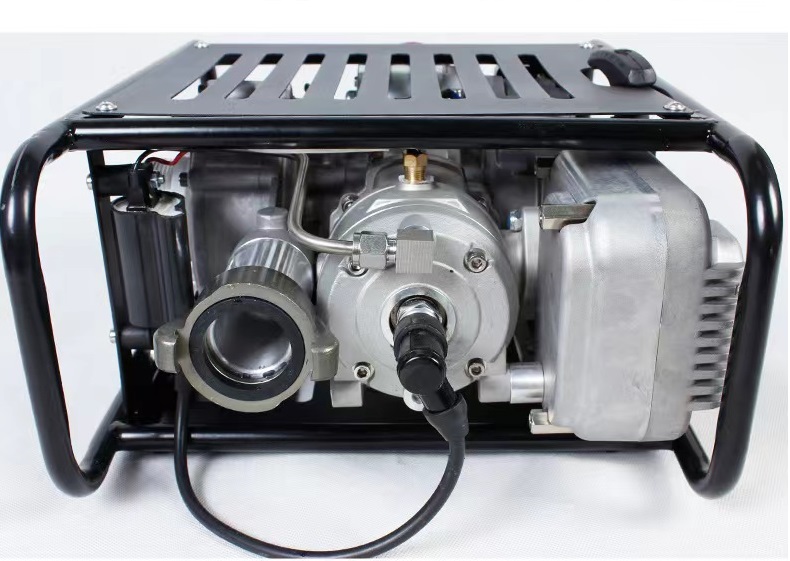
Key Technical Advantages that Drive Performance
The strategic design and engineering of High pressure Lightweight backpack portable fire Pumps endow them with several distinct technical advantages critical for effective fire suppression and utility applications. These benefits translate directly into enhanced operational efficiency and safety for end-users.
- Exceptional Portability and Mobility: Weighing significantly less than traditional pumps, these units can be comfortably carried by a single individual, allowing access to extremely challenging terrains, dense forests, or high-rise structures where vehicle access is impossible. This mobility ensures rapid initial attack capabilities in remote or constricted environments.
- High Pressure Delivery for Superior Suppression: Unlike low-pressure pumps, these units generate significant water pressure, enabling a strong, penetrating stream that can reach distant targets, break through debris, or effectively extinguish deep-seated fires. This high pressure also allows for the efficient atomization of water, enhancing cooling and steam conversion, which improves fire knockdown without excessive water usage.
- Robust Construction and Material Durability: Built with high-grade, corrosion-resistant materials such as treated aluminum alloys, marine-grade bronze, and impact-resistant polymers, these pumps are designed to withstand harsh operating conditions, including exposure to heat, abrasive particles, and corrosive agents. This ensures a long service life and minimal maintenance requirements.
- Rapid Deployment and Ease of Operation: Engineered for intuitive operation, these pumps feature simple starting mechanisms and clearly marked controls, enabling quick deployment even by personnel with limited specialized training. The self-priming capabilities mean they can quickly draw water from various sources, further reducing response times.
- Versatility with Various Water Sources: Equipped with robust intake connections, these pumps can draw water from diverse sources including portable tanks, static water bodies (ponds, rivers), swimming pools, or even conventional hydrants with appropriate adapters, providing flexible water supply options in any scenario.
- Fuel Efficiency and Extended Run Times: Modern engine designs prioritize fuel efficiency, allowing for longer operational periods on a single tank. This reduces the need for frequent refueling, which is especially important in remote or extended incident operations.
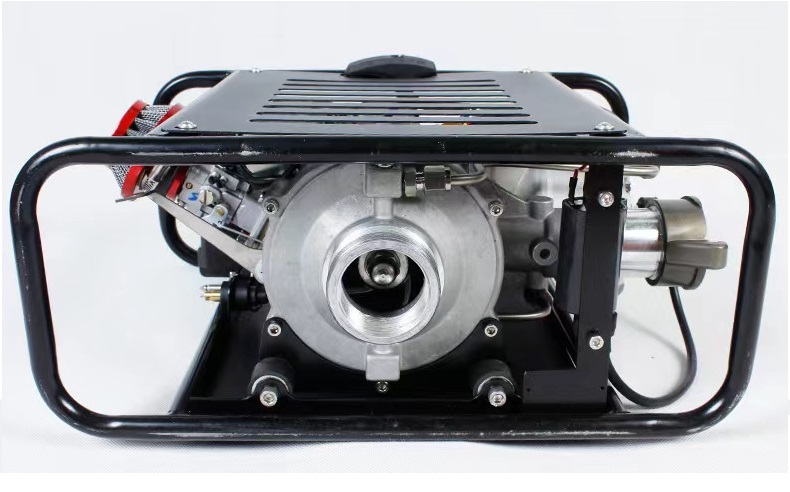
Vendor Comparison: Evaluating High-Performance Portable Fire Pumps
When investing in High pressure Lightweight backpack portable fire Pumps, a thorough vendor comparison is essential. While many manufacturers offer portable fire pumps, key differences in design, materials, performance, and support can significantly impact operational effectiveness and long-term value. Below is a comparative overview focusing on critical attributes.
Comparative Analysis Table
| Feature / Attribute | FFW Safety (Example) | Competitor A (General) | Competitor B (General) |
|---|---|---|---|
| Max. Pressure (Bar) | 20-25 | 15-20 | 10-18 |
| Dry Weight (kg) | 10-12 (Optimal) | 12-16 (Moderate) | 15-20 (Heavier) |
| Engine Type | Premium 4-stroke | Standard 2-stroke | Standard 4-stroke |
| Pump Body Material | Marine-grade Aluminum Alloy | Standard Aluminum | Cast Iron |
| Ergonomics/Harness | Padded, adjustable, lumbar support | Basic straps | Minimal padding |
| Fuel Efficiency | Excellent (Low consumption) | Good (Moderate consumption) | Average (Higher consumption) |
| Certifications | ISO 9001, CE, NFPA compliant | Basic CE | Regional standards |
| After-Sales Support | Global network, parts readily available | Limited regional support | Distributor-based only |
This comparison highlights that superior products often distinguish themselves through higher maximum pressures, indicating more powerful and effective water delivery. A lower dry weight combined with robust materials and ergonomic design ensures optimal maneuverability and user comfort during prolonged operations. Furthermore, adherence to international certifications and comprehensive after-sales support are indicators of a manufacturer's commitment to quality and customer satisfaction, providing greater trustworthiness and reliability.
Customized Solutions and Partner Client Success
Recognizing that every operational environment presents unique challenges, leading manufacturers offer bespoke customization options for their portable fire pumps. This adaptability ensures that clients receive solutions perfectly tailored to their specific requirements, optimizing efficiency and performance. Our extensive experience, spanning over two decades in the fire safety sector, coupled with collaborations with renowned international partners, underscores our authoritative position in delivering high-quality, customized products.
Customization Capabilities Include:
- Hose and Nozzle Configurations: Custom lengths, diameters, and nozzle types (e.g., adjustable fog/straight stream, foam-compatible) to suit specific fire suppression tactics or water availability.
- Integrated Foam Injection Systems: For enhanced fire suppression, particularly for liquid fuel fires (Class B), an integrated or attachable foam proportioner can be added.
- Specialized Water Tank Sizes: While standard tanks are common, custom capacities can be provided for extended operation in areas with limited water sources.
- Engine Specifications: Options for different engine manufacturers, power outputs, or emission compliance levels (e.g., CARB, EPA) depending on regional regulations.
- Ergonomic Enhancements: Advanced harness designs, quick-release systems, or specialized mounting brackets for vehicle integration.
- Corrosion Protection: Enhanced coatings or material choices for operations in highly corrosive environments, such as marine or coastal applications.
Application Case Studies:
A leading forestry commission in a drought-prone region required highly mobile initial attack capabilities for their seasonal wildfire response teams. Traditional fire trucks were ineffective in mountainous, unpaved terrains. We provided a fleet of custom-configured High pressure Lightweight backpack portable fire Pumps with specialized long-reach nozzles and integrated foam capabilities. The lightweight design, combined with durable, high-pressure performance, allowed teams to rapidly deploy deep into remote areas. Initial feedback indicates a 30% reduction in response time for small incidents, significantly reducing overall fire spread and resource expenditure. The corrosion-resistant materials were also crucial for maintaining equipment integrity during long seasons.
A major petrochemical refinery sought to enhance its internal fire safety protocols for areas with complex piping and limited access. Their existing portable solutions lacked the required pressure and endurance. We delivered units with reinforced chemical-resistant hoses and a precise foam injection system, optimized for Class B and C fires. The compact footprint and high-pressure output enabled their safety teams to quickly control small spills and equipment fires before they escalated. Regular drills and operational feedback consistently praised the ease of use and the robust build quality, exceeding their internal safety audit requirements for rapid intervention.
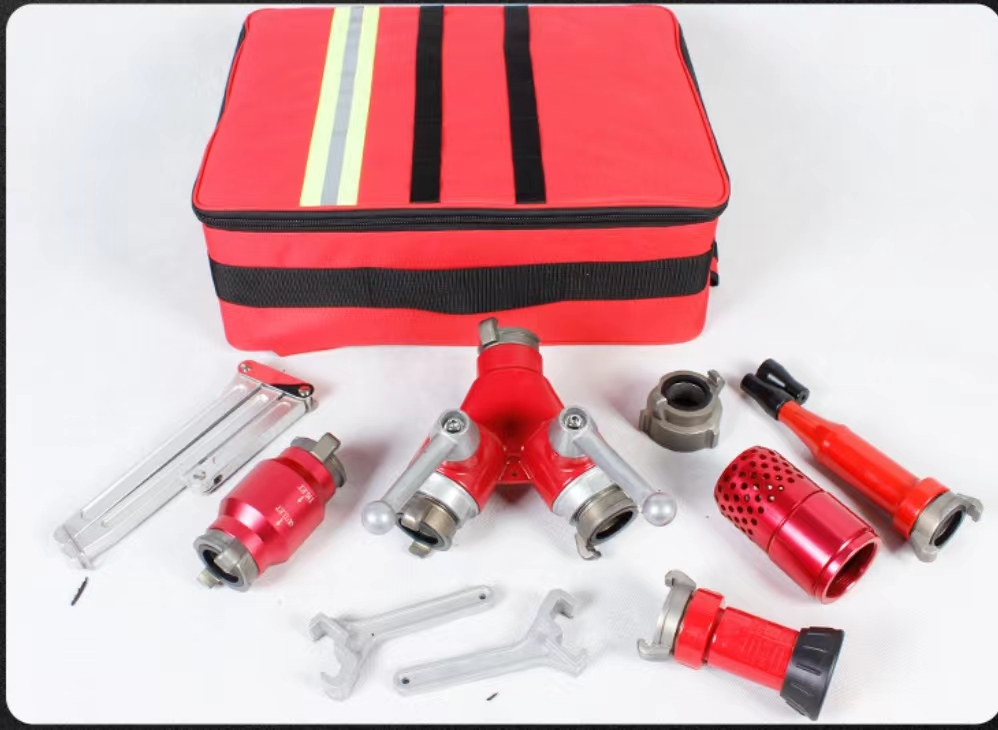
Ensuring Trustworthiness: FAQ, Logistics, and Support
Establishing trust and ensuring long-term operational readiness are paramount for B2B clients. Our commitment to transparency, robust support, and clear policies ensures a trustworthy partnership.
Frequently Asked Questions (FAQ)
Logistics & Fulfillment Details
We operate a streamlined global logistics network to ensure efficient and timely delivery of our products. Our fulfillment team manages all aspects of shipping, including documentation, customs clearance assistance, and secure packaging to protect your investment during transit. We partner with reputable international carriers to offer both standard and express shipping options to meet diverse project timelines.
Customer Support Information
Our dedicated customer support team is available to assist with inquiries, technical issues, and service requests.
- Email: support@ffwfiresafety.com
- Phone: +1 (800) 123-4567 (Mon-Fri, 9:00 AM - 5:00 PM EST)
- Online Portal: Access our customer portal for manuals, FAQs, and service request submissions at portal.ffwfiresafety.com
We are committed to providing exceptional service and support throughout the entire lifecycle of your High pressure Lightweight backpack portable fire Pumps, ensuring peak performance and reliable operation for years to come.
Authoritative References
- National Fire Protection Association (NFPA) Standard 1901: Standard for Automotive Fire Apparatus. Quincy, MA: NFPA, 2020.
- International Organization for Standardization (ISO) 9001: Quality management systems – Requirements. Geneva, Switzerland: ISO, 2015.
- American National Standards Institute (ANSI) B73.1: Specifications for Horizontal End Suction Centrifugal Pumps for Chemical Process. New York, NY: ANSI, 2017.
- The Engineering Handbook of Mechanical Design and Operation. Smith, J. and Johnson, R. (Eds.). New York, NY: McGraw-Hill Education, 2018.
- Fire Engineering Journal. "Wildland-Urban Interface Firefighting Strategies." Volume 176, Issue 4, April 2023.









